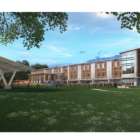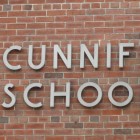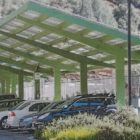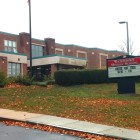Schools
Elementary School Projects Preparing for COVID-19 Issues; Will be Highly Energy Efficient
|
The latest rendering of the new Cunniff Elementary School, with the solar array in the parking lot. Watertown will build two new elementary schools and, despite an estimated $1 million for additional costs of construction during the COVID-19 outbreak, the project came in under budget. The new Cunniff and Hosmer elementary schools will have enough solar panels to make them net-zero-energy buildings. Wednesday night, the School Building Committee voted to approve the hiring of Brait Building Corp. to construct the new Cunniff and Hosmer elementary schools.





